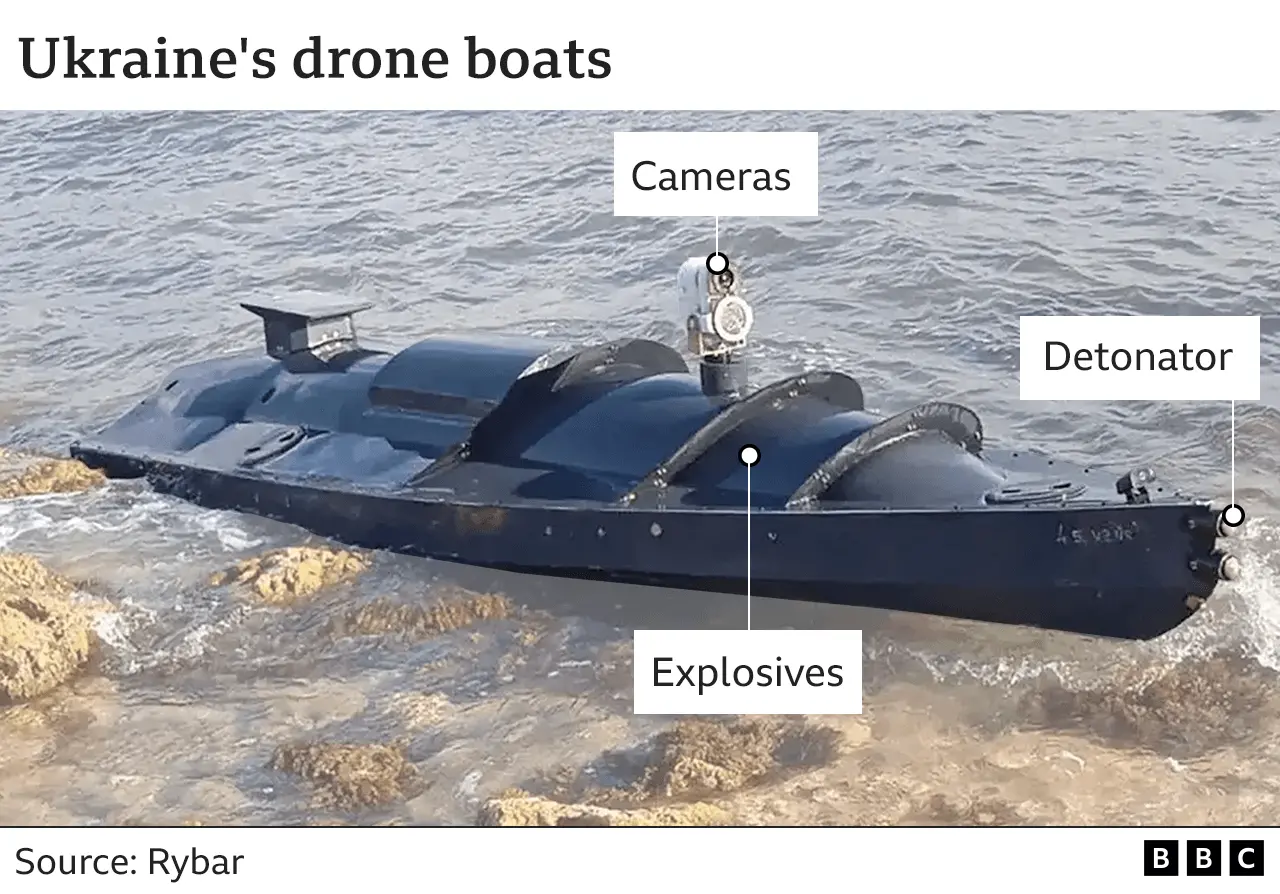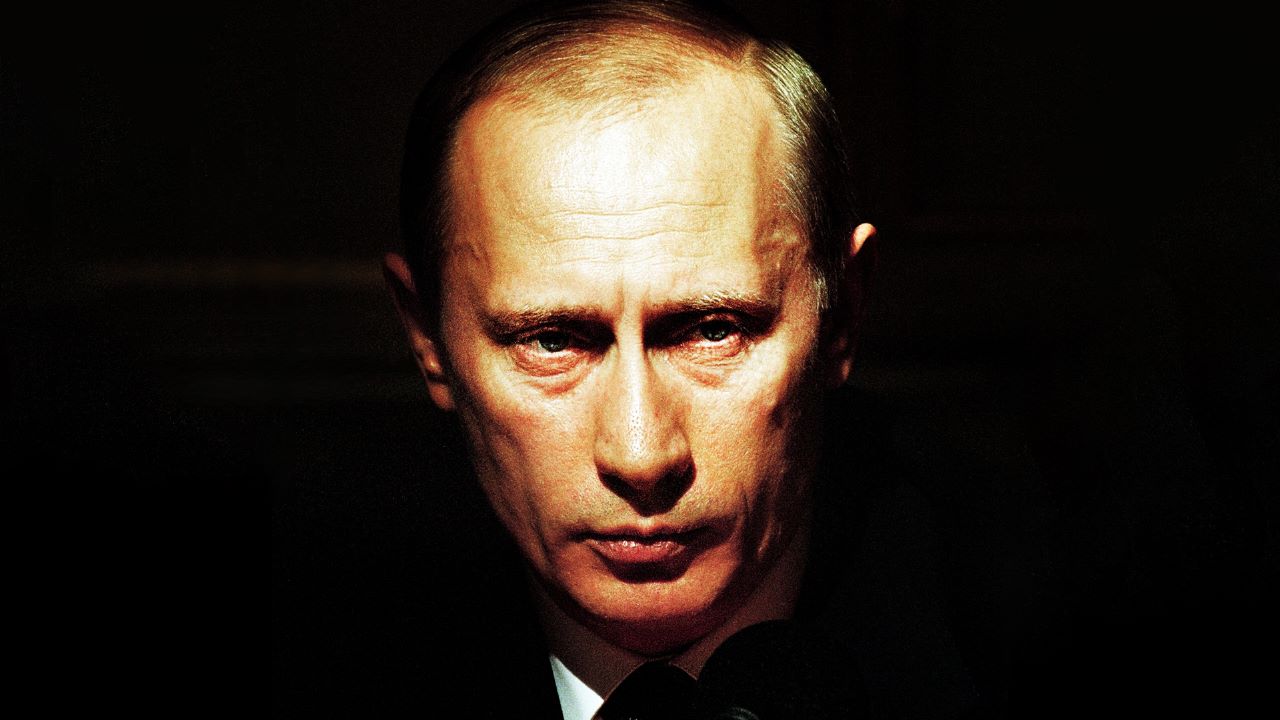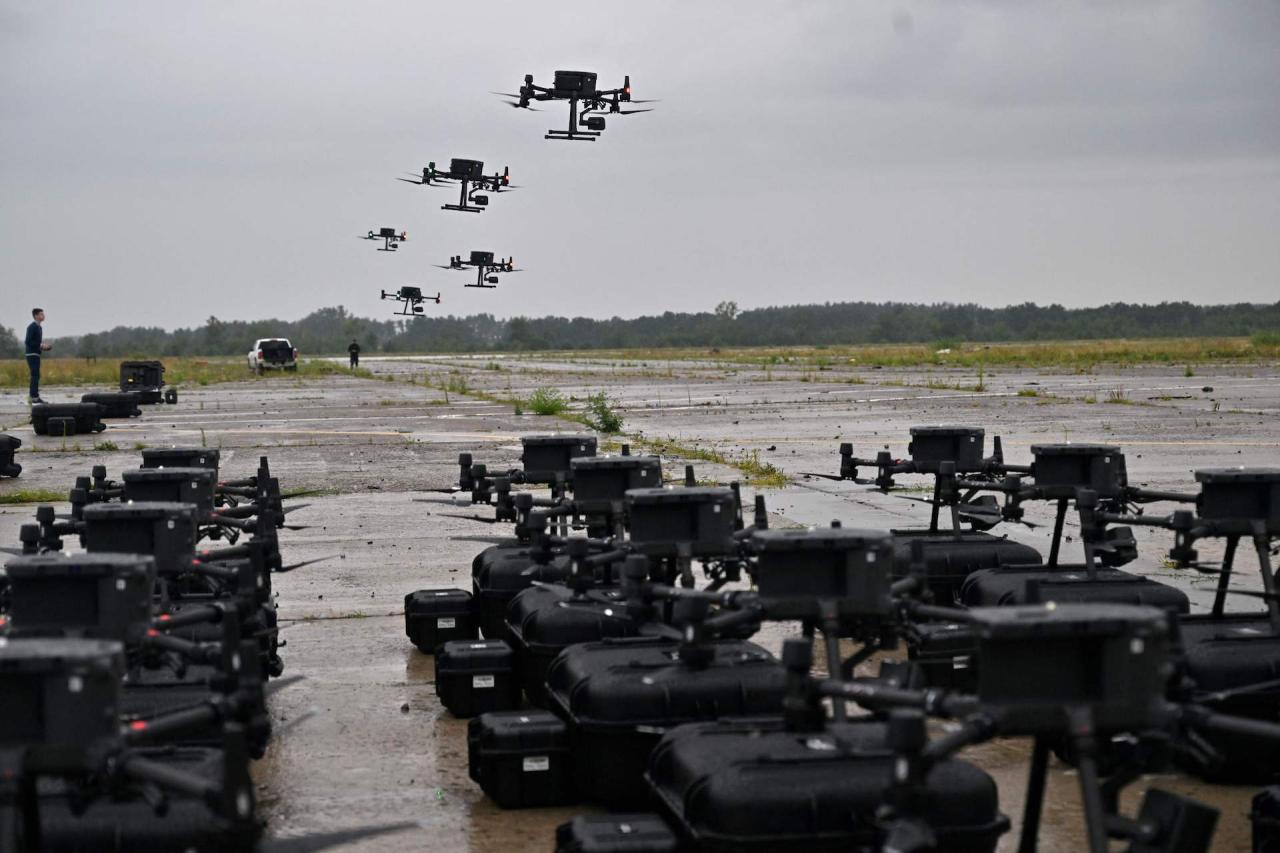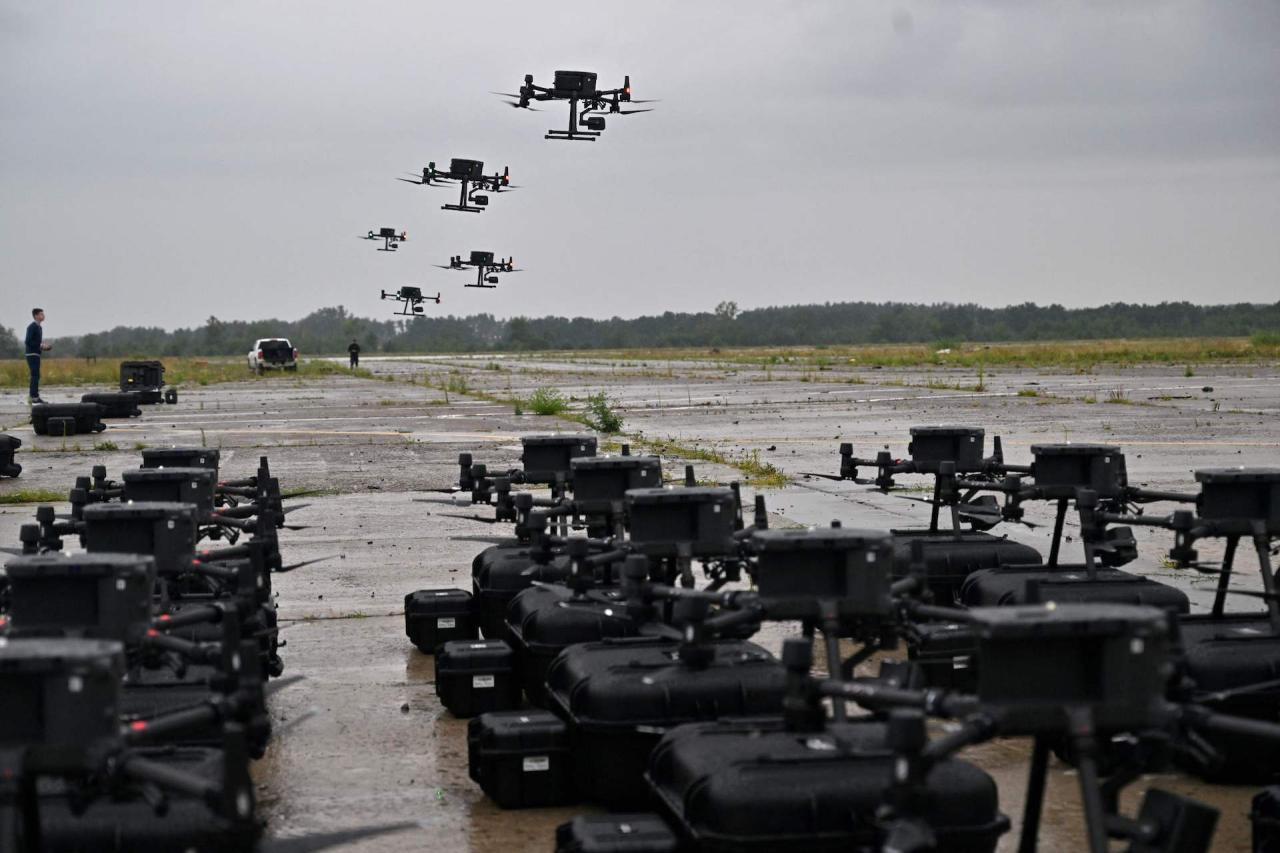Ukrainian sea drones are changing naval warfare. These unmanned vessels, ranging from small, expendable craft to more sophisticated autonomous systems, are proving surprisingly effective against larger, more expensive warships. This exploration delves into their technical capabilities, tactical deployments, and the broader geopolitical implications of this emerging technology.
We’ll examine the different types of Ukrainian sea drones, their technological advancements, and the impact they’re having on the global naval landscape. From their propulsion systems and communication methods to their payload capacities and operational strategies, we’ll cover it all. We’ll also look at the future of this technology and its potential for further development.
Ukrainian Sea Drone Technology

Ukraine’s deployment of sea drones has significantly impacted the ongoing conflict, demonstrating the potential of unmanned maritime systems in modern warfare. This technology represents a cost-effective and adaptable approach to naval operations, challenging traditional naval power dynamics. This article will delve into the technical specifications, operational capabilities, technological advancements, geopolitical implications, and manufacturing aspects of these drones.
Technical Specifications of Ukrainian Sea Drones

Ukraine employs a variety of sea drones, each tailored to specific missions. These range from smaller, expendable units to larger, more sophisticated platforms capable of carrying heavier payloads. Propulsion systems vary, impacting range and speed, while communication systems ensure reliable control and data transmission. Payload capacities differ depending on the drone’s size and design.
Ukrainian sea drones are making waves, showcasing impressive technological advancements in naval warfare. It’s a far cry from the dazzling spectacle of a light show, like the one you can see at the shanghai new year drone show , but both demonstrate the versatility of drone technology. The contrast highlights how drones are rapidly evolving for diverse applications, from military operations to large-scale entertainment.
Ultimately, both the Ukrainian sea drone and the Shanghai display share a common thread: innovative drone use.
Several types of Ukrainian sea drones are believed to be in operation, though precise details remain classified. These drones utilize different propulsion systems, including electric motors for quieter operation and potentially jet propulsion for higher speeds. Communication is likely achieved through a combination of satellite and radio links, ensuring reliable control even at considerable distances. Payloads can range from simple explosives to sophisticated sensors and reconnaissance equipment.
Ukrainian sea drones are becoming increasingly sophisticated, showcasing impressive capabilities in recent conflicts. Thinking about the scale of potential damage, it’s interesting to compare this to other devastating events, like the tragic emirates plane crash abu dhabi , which highlighted the vulnerability of large-scale infrastructure. The lessons learned from both incidents, however different, could inform future strategies for maritime and aerial security, particularly in the development and deployment of Ukrainian sea drones.
Below is a table comparing several hypothetical models (specific details about Ukrainian drone models are often classified):
| Drone Model | Payload Capacity (kg) | Range (km) | Speed (knots) |
|---|---|---|---|
| Example Model A | 50 | 100 | 15 |
| Example Model B | 200 | 50 | 25 |
| Example Model C | 10 | 200 | 10 |
Operational Capabilities and Tactics, Ukrainian sea drone
Ukrainian sea drones have been strategically deployed in various combat scenarios, demonstrating their effectiveness in disrupting enemy naval operations. Their relatively low cost and ease of deployment allow for saturation attacks, overwhelming enemy defenses. Successful missions have involved targeting enemy ships, disrupting supply lines, and gathering intelligence.
- Strategic Deployment: Used for both offensive and defensive operations, targeting critical infrastructure, disrupting supply lines, and conducting reconnaissance missions.
- Disruption of Enemy Naval Operations: Swarms of drones can overwhelm defenses, causing significant damage and disruption at a fraction of the cost of traditional naval assets.
- Successful Missions: Reports suggest successful attacks on Russian warships and other naval assets, although precise details are often limited due to operational security.
Key differences in operational tactics between Ukrainian sea drones and other naval assets include:
- Cost-effectiveness: Drones are significantly cheaper to deploy and lose than traditional ships.
- Risk mitigation: The loss of a drone is less impactful than the loss of a crewed vessel.
- Flexibility: Drones can be deployed rapidly and easily, adapting to changing operational conditions.
- Stealth: Smaller drones can operate more stealthily than larger vessels.
Technological Advancements and Future Developments
Several key technological advancements have enhanced Ukrainian sea drone capabilities. These include improved propulsion systems, more reliable communication links, and enhanced payload capacity. Future developments are likely to focus on increased autonomy, AI integration, and improved survivability.
A conceptual next-generation Ukrainian sea drone might incorporate advanced features such as:
- AI-powered target recognition and autonomous navigation: Allowing for more effective and independent operations.
- Improved stealth capabilities: Reducing the drone’s detectability.
- Modular payload systems: Adapting to various mission requirements.
- Enhanced communication systems: Ensuring reliable control and data transmission even in contested environments.
- Increased range and endurance: Extending operational capabilities.
This conceptual drone would be a larger, more sophisticated platform with a robust hull design, capable of carrying a variety of payloads and operating autonomously for extended periods. It would be equipped with advanced sensors, including radar, sonar, and electro-optical systems, allowing for improved situational awareness and target acquisition.
International Implications and Geopolitical Context
The successful deployment of Ukrainian sea drones has significant implications for the global naval landscape, demonstrating the potential of low-cost, high-impact asymmetric warfare capabilities. This technology has shifted the balance of power in certain regional contexts and sparked discussions about the future of naval warfare.
- Impact on Global Naval Landscape: Low-cost, effective sea drones challenge the dominance of traditional naval powers.
- Implications for Regional Security: The technology can destabilize existing power dynamics and influence regional conflicts.
- Comparison with Other Countries: Many nations are developing similar technologies, creating a global arms race in unmanned maritime systems.
International responses to the use of Ukrainian sea drones have included:
- Increased interest in developing similar technologies by other nations.
- Discussions on international regulations for the use of autonomous weapons systems.
- Concerns about the potential for escalation and destabilization.
Manufacturing and Supply Chain
The manufacturing process of Ukrainian sea drones likely involves a combination of domestic and international components. The supply chain includes various suppliers for materials, components, and specialized technologies. Potential vulnerabilities exist, particularly regarding the availability of critical components and the resilience of the supply chain to disruptions.
Ukraine’s innovative sea drones are causing a stir, showcasing the potential of unmanned maritime technology. Thinking about regulations, it’s worth checking out the new drone rules Canada has implemented, as similar advancements in drone tech are rapidly changing airspace and waterspace regulations globally. These new rules highlight the importance of adapting legislation to keep pace with the evolving capabilities of Ukrainian sea drones and similar innovations.
The manufacturing process and supply chain directly impact the overall effectiveness of the drones. A robust and resilient supply chain is crucial for ensuring the continued production and deployment of these vital assets. Challenges may include securing reliable sources for advanced components, managing logistics in a conflict zone, and adapting to potential disruptions or sanctions.
Last Word

Ukrainian sea drones represent a significant shift in naval power dynamics. Their relatively low cost, adaptability, and surprising effectiveness offer a potent counter to larger, more expensive naval assets. While challenges remain in areas like supply chain resilience and countermeasures, the ongoing evolution of this technology promises to continue shaping the future of naval warfare and international security. The impact extends far beyond the current conflict, raising crucial questions about the future of naval strategy and the balance of power at sea.
FAQ Section
How are Ukrainian sea drones funded?
Funding likely comes from a combination of government resources, international aid, and potentially private investment.
What are the limitations of Ukrainian sea drones?
Limitations include vulnerability to countermeasures (like electronic warfare), range restrictions, and dependence on reliable communication links.
Are Ukrainian sea drones easily repairable?
This depends on the drone model and the extent of damage. Simpler models might be easier to repair in the field, while more complex drones may require specialized facilities.
What is the lifespan of a typical Ukrainian sea drone?
Lifespan varies greatly depending on the model and usage. Some are designed as expendable, while others may have longer operational lives with maintenance.
